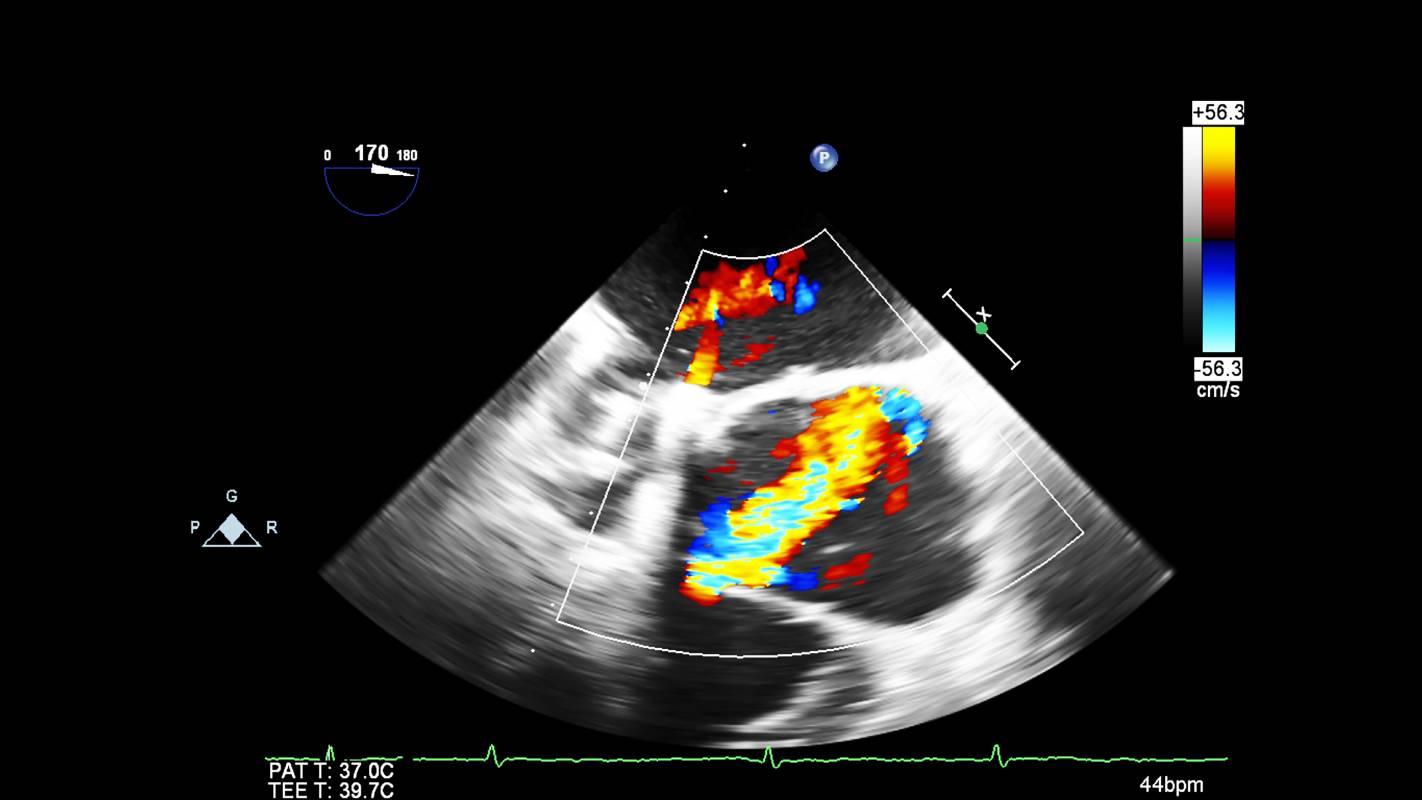Transesophageal echocardiograms (TEE) are a central tool in the diagnosis of cardiovascular disorders [1]. This technique allows medical teams to better evaluate a patient’s cardiac function, structure, and general health [1]. Despite its benefits, TEE is an uncomfortable and invasive procedure [1, 2]. It can lead to emotional distress, agitation, shortness of breath, and nausea, as well as organ injury [1, 3]. Fortunately, anesthesia can help ease the stresses and discomfort of transesophageal echocardiograms [4].
When considering which sedative medications to use for transesophageal echocardiograms, anesthesia providers must choose the agent with the lowest chance of compromising patients’ cardiovascular and respiratory systems while maximizing their comfort [1]. Two promising anesthetic agents for use during TEE are dexmedetomidine and ketofol [1]. Dexmedetomidine is “a highly selective α-adrenoceptor agonist,” while ketofol refers to the combination of ketamine and propofol [1]. According to several studies, both agents have been effective in sedating cardiac patients without risking their cardiovascular or respiratory stability [1, 5]. Additionally, propofol alone can be useful for creating anxiolysis and primary sedation, making it a candidate for use during TEE as well [3]. All three agents have been the subjects of several research studies.
In 2016, Toman et al. evaluated the efficacy of propofol in comparison to midazolam and midazolam-alfentanil [3]. Their subjects were 90 stable adults in ASA (American Society of Anesthesiologists) risk groups I-II-III who were receiving diagnostic TEEs [3]. Each patient received exactly one of the sedatives [3]. The researchers measured recovery time, length of hospital stay, additional dose requirements, modified Aldrete Scoring (MAS) for post-anesthesia care unit discharge, and Ramsey Sedation Scale (RSS) [3]. Despite requiring greater dosages, the propofol group showed better results compared to the other two in terms of sedation depth, time needed to achieve sedation, avoidance of expensive antagonist agents, and early hospital discharge [3]. While this study indicates that propofol can be a comparatively safe option during TEE, propofol’s lack of an amnestic effect suggests that it may not be the best choice for maximizing patient comfort during the procedure [3].
Studies analyzing propofol alongside dexmedetomidine and ketofol have identified the former as less effective during TEE according to some parameters, but these measures are not necessarily associated with its non-amnesic characteristics [1, 4]. Alizadehasl et al. conducted a randomized controlled trial with 65 cardiac patients to evaluate the sedative effects of dexmedetomidine versus propofol during TEE [4]. While both groups exhibited comparable levels of physician and patient satisfaction, the dexmedetomidine group had a better recovery time and improved bispectral index levels (BIS) than those who received propofol [4].
Another study comparing propofol, ketofol, and dexmedetomidine found the latter two agents preferable in terms of respiratory stability [1]. However, propofol and ketofol sedated patients quicker and corresponded with faster recovery times, contradicting the Alizadehasl study [1, 4]. In spite of this discrepancy, the latter experiment identified ketofol as preferable to both propofol and dexmedetomidine due to its higher physician satisfaction scores and reduced instances of hemodynamic alterations [1]. This conclusion is in line with previous studies, at least in terms of ketofol’s safety in comparison to dexmedetomidine [6].
Despite this indication that ketofol may lead to better hemodynamic stability than propofol and dexmedetomidine, the lack of a consensus on this matter warrants further investigation across various contexts. One such context could be pediatrics, in which agents like propofol and ketofol appear safe during other cardiac procedures, but have not been robustly tested during TEE [5]. As more research occurs on this matter, anesthesia providers will have a clearer idea of best practices during transesophageal echocardiograms.
References
[1] M. B. El Mourad et al., “Effects of Propofol, Dexmedetomidine, or Ketofol on Respiratory and Hemodynamic Profiles in Cardiac Patients Undergoing Transesophageal Echocardiography: A Prospective Randomized Study,” Journal of Cardiothoracic and Vascular Anesthesia, vol. 00, p. 1-8, November 2020. [Online]. Available: https://doi.org/10.1053/j.jvca.2020.11.013.
[2] A. Aydin et al., “Ondansetron administration before transoesophageal echocardiography reduces the need for sedation and improves patient comfort during the procedure,” European Journal of Echocardiography, vol. 11, no. 9, p. 752-755, October 2010. [Online]. Available: https://doi.org/10.1093/ejechocard/jeq061.
[3] H. Toman et al., “Sedation for transesophageal echocardiography: Comparison of propofol, midazolam and midazolam-alfentanil combination,” Medicinski Glasnik, vol. 13, no. 1, p. 18-24, February 2016. [Online]. Available: https://doi.org/10.17392/825-16.
[4] A. Alizadehasl et al., “Comparison of sedation between dexmedetomidine and propofol during transesophageal echocardiography: A randomized controlled trial,” Annals of Cardiac Anaesthesia, vol. 22, no. 3, p. 285-290, July-September 2019. [Online]. Available: https://doi.org/10.4103/aca.ACA_42_18.
[5] R. Soliman, M. Mofeed, and T. Momenah, “Propofol versus Ketofol for Sedation of Pediatric Patients Undergoing Transcatheter Pulmonary Valve Implantation: A Double-blind Randomized Study,” Annals of Cardiac Anaesthesia, vol. 20, no. 3, p. 313-317, July-September 2017. [Online]. Available: https://doi.org/10.4103/aca.ACA_24_17.
[6] H. E. E. A. Hassan, “Dexmedetomidine versus ketofol for moderate sedation in Endoscopic Retrograde Cholangiopancreatography (ERCP) comparative study,” Egyptian Journal of Anaesthesia, vol. 31, no. 1, p. 15-21, January 2015. [Online]. Available: https://doi.org/10.1016/j.egja.2014.11.002.
